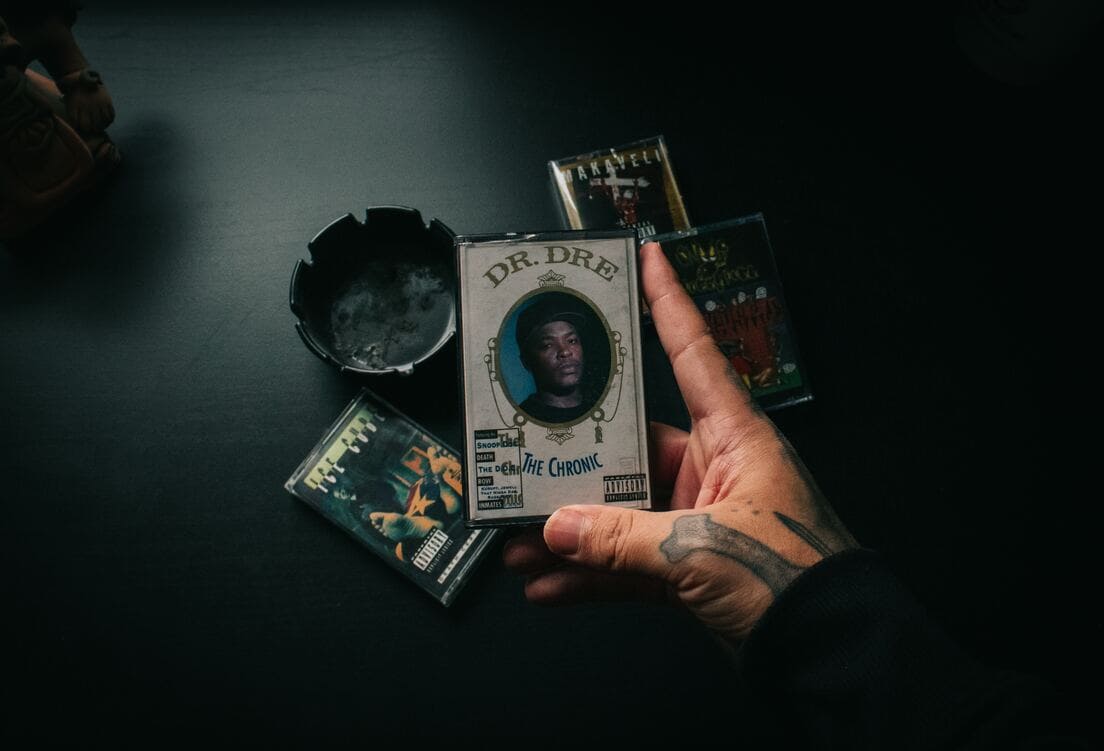Hip-hop is a cultural and artistic movement that originated in inner-city America in the 1970s. It has since evolved into a global phenomenon, with profound influences in music, dance, visual art, fashion and society. In this article, we explore the origins of Hip-Hop, its evolution, its impact on culture and society, and the challenges and criticisms it has faced.
Introduction
Hip-Hop is much more than a musical genre, it's a cultural movement that emerged as a form of expression for young African-Americans and Latinos living in the inner cities of New York in the 1970s. It was influenced by a variety of cultures, including African, Caribbean and Latin American music, as well as by the social and economic struggles these communities faced. Today, hip-hop has become a global phenomenon that continues to evolve and reinvent itself.
What is Hip-Hop?
Hip-hop is a cultural and artistic movement which encompasses many elements, including music, dance, visual art, fashion and street culture. Hip-Hop music is often characterized by its driving rhythm, punchy lyrics and catchy beats. Hip-hop dance, such as breakdancing, is a key element of hip-hop culture, as is visual art, with graffiti as the movement's emblematic form of artistic expression. Hip-Hop fashion, with its distinctive style and street culture, has also had a major impact on fashion and popular culture.
The origins of hip-hop
Hip-hop has complex, multi-factorial origins. It originated in New York's inner cities in the 1970s, mainly in the Bronx, as a form of expression for young African-Americans and Latinos facing social and economic challenges. The origins of Hip-Hop can be traced back to African, Caribbean and Latin American musical influences, as well as to the struggles for civil rights and racial equality in the United States.
Birthplace of hip-hop
Hip-Hop is a musical and cultural genre that originated in the 1970s in the slums of New York City, USA. More specifically, Hip-Hop emerged in the Bronx neighborhood, which was then plagued by poverty, racial discrimination and violence. Young people from these neighborhoods found in Hip-Hop a form of artistic expression and social protest, which quickly became a worldwide cultural movement.
History of hip-hop in the Bronx
Hip-hop has its origins in the cultural diversity of the Bronx, where different communities, notably African-American, Latin American and Caribbean, have blended to create a unique culture. In the 1970s, young people in the Bronx began organizing block parties, neighborhood events featuring music, dance and art. These block parties became the cradle of hip-hop, where DJs began mixing beats and rhythms, MCs (Masters of Ceremonies) began rapping and dancers showcased their talents in dance battles.
Hip-hop is also closely linked to the practice of graffiti, an urban art form that was very present on the streets of the Bronx. Graffiti artists used the city's walls as a canvas to express their creativity and social protest, creating colorful, hard-hitting frescoes.
The evolution of hip-hop
Hip-hop quickly spread beyond the Bronx to other parts of New York and then to other cities in the USA. Over the years, Hip-Hop evolved and diversified, giving rise to various musical sub-genres, such as rap, breakdance, beatboxing and DJing. It has also influenced fashion, dance, visual art and language, becoming a culture in its own right.
In the 1980s, Hip-Hop gained worldwide popularity, becoming a cultural phenomenon that transcended borders and language barriers. Hip-hop became a voice for young people from disadvantaged neighborhoods, who used this form of expression to talk about their reality, their hopes and their frustrations.
Impact of place of birth on hip-hop culture
The birthplace of hip-hop in the Bronx has had a profound impact on hip-hop culture as a whole. The neighborhood's difficult socio-economic situation contributed to the birth of a movement of young people seeking to express themselves and assert their identity. The Bronx's cultural diversity also enriched Hip-Hop culture by incorporating a variety of musical, linguistic and artistic influences.
Hip-hop thus became a means for young people from the Bronx and other underprivileged neighborhoods to assert themselves and share their life experiences through music, dance, graffiti and fashion. It also gave a voice to those who were marginalized and discriminated against, offering them a means of expressing themselves and asserting their cultural identity.
The birthplace of Hip-Hop in the Bronx has also influenced the way Hip-Hop culture has developed and evolved over the years. Bronx block parties laid the foundations for DJing and rapping, which have become key elements of Hip-Hop. Dance battles in the streets of the Bronx gave rise to breakdance, an acrobatic dance form that has become emblematic of Hip-Hop. Bronx graffiti artists created a unique style that has spread throughout Hip-Hop culture, with colorful, expressive graffiti on city walls around the world.
Hip-hop culture in the Bronx has also been marked by a mentality of resistance and determination in the face of adversity. Young people in the Bronx faced challenges such as poverty, racial discrimination and violence, and Hip-Hop became a way for them to assert themselves and fight for their dignity and rights. This mentality of resistance and self-assertion has remained embedded in Hip-Hop culture, even beyond the Bronx, and continues to be an important element of that culture.
Global impact of hip-hop
Hip-hop quickly spread beyond the Bronx to become a global cultural movement. Over the years, it has spread to many countries around the world, influencing music, dance, fashion, art and language in different cultures. Hip-hop has been able to adapt and evolve in each region where it has taken root, incorporating local elements while retaining its original essence.
In many countries, hip-hop has become a means for young people to express themselves, assert their identity and defend their rights. It has also been a vehicle for social change, addressing issues such as inequality, discrimination, violence and injustice. Hip-hop has also fostered the creation of a worldwide community of enthusiasts and creators, who share a common culture and passion for this form of artistic expression.
Impact on music and dance
Hip-hop has significantly revolutionized music and dance. Rap, one of the key elements of hip-hop, has become one of the most popular and influential musical genres worldwide. Rappers use their music to tell stories, express emotions, tackle social and political issues, and share their vision of the world. Hip-hop beats and rhythms have also become a source of inspiration for many other musical genres, from pop to R&B to electro.
Hip-hop dance, meanwhile, has become an art form in its own right. Breakdance, also known as B-boying or B-girling, has become an emblematic Hip-Hop dance style, characterized by acrobatic movements, spins, freezes and complex footworks. Hip-hop dance also encompasses other styles such as popping, locking, krump, waacking and many others, each with its own distinctive movements and unique artistic expression.
Impact on fashion and art
Hip-Hop has also had a major impact on fashion and art. Hip-hop dress codes, such as sneakers, caps, loose clothing, gold chains and flashy accessories, have become emblematic of the culture. Hip-hop artists have also created their own artistic style, notably through graffiti. The colorful graffiti, tags and lettering typical of Hip-Hop have invaded streets the world over, becoming an art form in their own right and influencing contemporary visual culture.
Influences on Hip-Hop
Hip-hop has been influenced by various musical cultures, notably African, Caribbean and Latin American. The driving rhythms, percussion and chants of these cultures have been integrated into Hip-Hop music, creating a unique and distinctive sound. Hip-hop artists have also drawn on other musical genres such as funk, jazz, reggae and R&B to create their own unique musical style.
Founding elements of Hip-Hop
Hip-hop is based on four interconnected founding elements that define the movement. These elements are :
DJing DJs are at the heart of hip-hop music. They create the beats, mix the tracks and manipulate the vinyl to create a unique sonic experience.
MCing MCs, or Masters of Ceremonies, are the rappers who use their voices to deliver powerful lyrics to the beats created by the DJs.
The dance Hip-hop dance, such as breakdance, is a form of physical expression that accompanies music. It is characterized by acrobatic movements, figures and rhythmic gestures.
Graffiti Graffiti is a visual art form that originated with hip-hop. Graffiti artists use walls and trains as canvases to express their creativity and message.
These four founding elements are interconnected and complement each other to form Hip-Hop culture as a whole.
The cultural influence of hip-hop
Hip-Hop has had a profound cultural impact around the world, influencing various aspects of contemporary society. Here are some of Hip-Hop's major cultural influences:
Social influences
Hip-hop has been a means of expression for young people from disadvantaged backgrounds, enabling them to share their life experiences and connect with others sharing similar experiences. It has created a unique community and culture, where diversity, inclusion and unity are valued. Hip-hop has also tackled important social issues such as racial discrimination, police brutality, socio-economic inequality and social injustice, raising public awareness of these issues.
Cultural influences
Hip-Hop has significantly influenced popular culture, particularly in music, dance, art and fashion. Hip-Hop music styles such as rap, trap, R&B and graffiti have become popular music genres worldwide, with world-renowned Hip-Hop artists dominating the music charts. Hip-hop dance, like breakdance, has become a recognized and respected form of artistic expression worldwide. The urban art of graffiti, which originated in Hip-Hop communities, has become a contemporary art form appreciated in galleries around the world. Hip-hop-influenced urban fashion, with its loose-fitting garments, caps, sneakers and jewelry, has become a global trend, influencing street fashion and youth culture.
Political influence
Hip-hop has been a means for artists to share their views on the political and social issues that concern them. Hip-hop lyrics often address political issues and criticize the systems and institutions that oppress marginalized communities. Hip-hop has been used as a tool of protest and mobilization to combat social injustice, racial discrimination and other political issues. It has also inspired the creation of movements such as Political Hip-Hop, which aims to use hip-hop culture as a means of political awareness and social change. Rapper Tupac Shakur is a good example. political influence through rap.
Technological influences
Hip-hop pioneered the use of technology in music and audio production. The use of music sampling, dance beats and DJing techniques revolutionized the music industry and influenced other musical genres. Hip-hop artists have also used social media and online platforms to share their music, art and message, creating a dynamic and engaged online community.
Economic influences
Hip-Hop has also had a considerable economic impact, generating significant revenues in the music, fashion, dance, art and other cultural industries. Hip-Hop artists have successfully created brands (eg: Diddy with Sean Jon or even Jay-Z with Roca Wear), clothing lines (e.g: Kanye West with Yeezy), music production companies and other lucrative businesses, creating employment and economic development opportunities for local communities.
Educational influences
Hip-Hop has also been used as an educational tool in many contexts. Hip-Hop education programs have been set up in schools to help students engage with learning and develop their skills in writing, artistic expression, creativity and communication. Hip-Hop has also been used in rehabilitation programs for troubled youth, using music, dance and art to help them express themselves, develop self-confidence and reintegrate into society.
Influences on language
Hip-Hop has also influenced language and the way it is used. Hip-Hop artists have introduced new words, expressions, jargon and forms of slang into popular culture. Hip-Hop song lyrics are often rich in puns, metaphors and unique expressions that have been adopted into everyday language. Hip-Hop has thus contributed to the evolution of language and communication, creating a distinctive and dynamic language.
Influences on youth
Hip-hop has had a significant impact on young people, particularly in urban communities. It has provided a form of expression and identity for young people, allowing them to express themselves, connect with their culture and feel part of a community. Hip-hop has also inspired many young people to pursue their passion for music, dance, art and fashion, creating opportunities for personal and career development.
Influences on cultural diversity
Hip-Hop is a culture that embraces cultural diversity, incorporating elements of different musical, artistic and linguistic traditions from around the world. It has thus helped to promote cultural diversity and celebrate differences, fostering inclusion and mutual understanding between cultures. Hip-hop has also been a means of giving a voice to ethnic and cultural minorities, helping them to be heard and to share their history and identity.
Influences on lifestyle
Hip-Hop has also influenced the lifestyles of many of its followers. Hip-Hop-inspired urban casual fashion, with its loose-fitting clothes, hats, sneakers and jewelry, has become a worldwide trend, influencing the way people dress and behave in their daily lives. Hip-Hop has also influenced the way people listen to music, dance, express themselves and interact with popular culture.
Influences on creativity
Hip-Hop has also had a significant influence on creativity. Hip-Hop artists are known for their creativity in music, dance, fashion, visual art and other forms of artistic expression. Hip-Hop has encouraged innovative thinking, creativity and the search for new approaches to expressing ideas and emotions. It has also encouraged experimentation, the fusion of different styles and the challenging of established artistic norms.
Influences on the entrepreneurial mindset
Hip-Hop has also inspired an entrepreneurial mentality in many artists. Hip-Hop artists have often had to fight for their success, creating their own path in a competitive music industry. This has encouraged many Hip-Hop artists to become entrepreneurs, launching their own brands, setting up their own music production companies, investing in other businesses and using their success in the Hip-Hop industry as a springboard for other business opportunities.
Influences on social consciousness
Hip-Hop has also helped to raise social consciousness, highlighting the issues and challenges facing marginalized communities. The lyrics of Hip-Hop songs often address social, economic and political issues, and serve as a means of raising public awareness of these issues. In this way, Hip-Hop has helped to educate and inform people about important issues, encouraging critical thinking and awareness of injustice and inequality.
Conclusion
Hip-hop is much more than just a musical genre or dance form. It's a cultural and artistic movement that emerged in the slums of New York in the 1970s, and has since spread throughout the world. African, Caribbean and Latin American musical influences, as well as social and political struggles, contributed to the birth of Hip-Hop. The four founding elements of Hip-Hop - DJing, MCing, dance and graffiti - complement each other to form the Hip-Hop culture as a whole. Hip-Hop has also had a significant cultural impact, influencing fashion, dance, visual art and many other aspects of popular culture.
FAQ (Frequently Asked Questions)
What are the main musical sub-genres of hip-hop?
Hip-hop encompasses several musical sub-genres, such as rap, trap, R&B hip-hop and more.
Who are some of the most influential hip-hop artists of all time?
Some of the most influential hip-hop artists of all time include Tupac Shakur, Notorious B.I.G., Jay-Z, Eminem, Kendrick Lamar, and Kanye West, to name but a few.
What is the social impact of hip-hop?
Hip-hop has been a means for artists to express themselves on important social and political issues, tackling topics such as racial discrimination, violence, poverty, and social inequality, helping to raise public awareness of these issues.
What influence does hip-hop have on fashion?
Hip-hop has influenced urban fashion, with its distinctive style of dress including sneakers, caps, loose clothing and blinged-out jewelry.
What are the other important elements of hip-hop culture?
In addition to the four founding elements of Hip-Hop - DJing, MCing, dance and graffiti - other important elements include the philosophy, values and mentality that underpin Hip-Hop culture.
How did hip-hop become a worldwide movement?
Hip-hop has spread around the world thanks to the globalization of media, music and popular culture, and the passionate commitment of hip-hop artists and fans worldwide.







